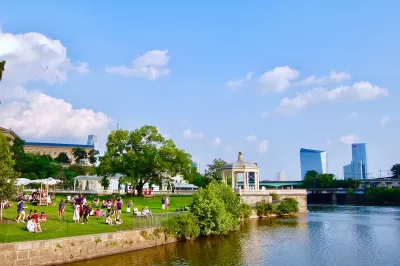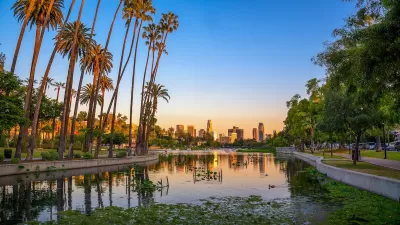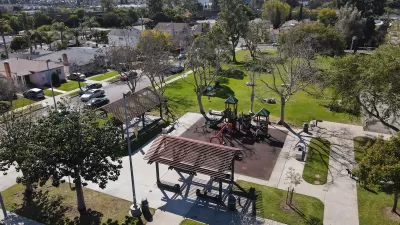Researchers used a machine learning algorithm to analyze over 200 parks in Philadelphia, revealing insights about differences in access to quality parks.

According to a new study from the University of Delaware, park access and quality vary across the city of Philadelphia. Using a machine learning algorithm to analyze 285 parks from over 100,000 park reviews gathered from Google Maps, the study shows that a majority of the parks that are considered to be of high quality are located in areas that are more likely have more affluent, white, and college educated residents. The parks that scored the lowest tend to be in areas where the residents are historically marginalized, including mostly low-income, Black and Latino, with a lower level of educational attainment.
As reported by Adam Thomas, the researchers corroborated the reviews with the physical characteristics of those parks using satellite and aerial imagery, as well as police reports and data from the Philadelphia Parks and Recreation Department. The study was published in Scientific Reports and was led by Matthew Walter, a doctoral student at the University of Delaware. Walter shared that by reading social media reviews of parks from 2011 to 2022 and by examining a large amount of reviews spread across a wide range of parks, he and his fellow researchers were able to see how a large population of Philadelphia was feeling about its urban parks.
Of particular concern to the researchers was that one key demographic group that lacked access to highly rated parks were the ones who needed them the most: young children. In the areas where the census data showed more young children, the park reviews were more likely to mention condition and safety when compared to other topics. This lower perceived park quality for young children raises a concern for childhood health and development.
FULL STORY: Study uses social media and machine learning to show environmental injustices in Philadelphia's urban parks

Study: Maui’s Plan to Convert Vacation Rentals to Long-Term Housing Could Cause Nearly $1 Billion Economic Loss
The plan would reduce visitor accommodation by 25,% resulting in 1,900 jobs lost.

North Texas Transit Leaders Tout Benefits of TOD for Growing Region
At a summit focused on transit-oriented development, policymakers discussed how North Texas’ expanded light rail system can serve as a tool for economic growth.

Using Old Oil and Gas Wells for Green Energy Storage
Penn State researchers have found that repurposing abandoned oil and gas wells for geothermal-assisted compressed-air energy storage can boost efficiency, reduce environmental risks, and support clean energy and job transitions.

Santa Barbara Could Build Housing on County Land
County supervisors moved forward a proposal to build workforce housing on two county-owned parcels.

San Mateo Formally Opposes Freeway Project
The city council will send a letter to Caltrans urging the agency to reconsider a plan to expand the 101 through the city of San Mateo.

A Bronx Community Fights to Have its Voice Heard
After organizing and giving input for decades, the community around the Kingsbridge Armory might actually see it redeveloped — and they want to continue to have a say in how it goes.
Urban Design for Planners 1: Software Tools
This six-course series explores essential urban design concepts using open source software and equips planners with the tools they need to participate fully in the urban design process.
Planning for Universal Design
Learn the tools for implementing Universal Design in planning regulations.
Ascent Environmental
Borough of Carlisle
Institute for Housing and Urban Development Studies (IHS)
City of Grandview
Harvard GSD Executive Education
Toledo-Lucas County Plan Commissions
Salt Lake City
NYU Wagner Graduate School of Public Service





























